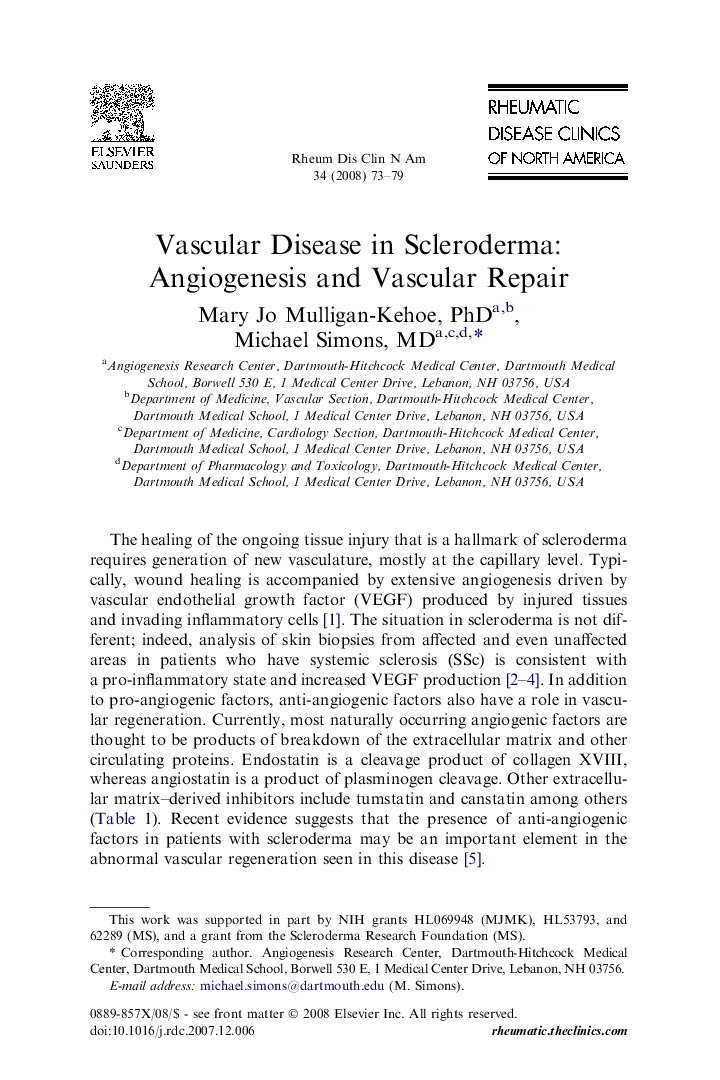| Article ID | Journal | Published Year | Pages | File Type |
|---|---|---|---|---|
| 3390647 | Rheumatic Disease Clinics of North America | 2008 | 7 Pages |
Abstract
Vascular abnormalities are one of the primary pathologic components of scleroderma. An early vascular indicator is aberrant nail fold capillaries that appear to undergo a switch from a pro- to anti-angiogenic process. Later in the disease process, ineffective and aberrant wound healing becomes apparent with frequent and widespread fibrosis. Pulmonary hypertension, largely due to the loss of pulmonary arterial vasculature, is frequently observed in late stages of the disease. The common theme of all these processes is abnormal regeneration of the vasculature and ongoing vascular losses due to defective maintenance of the vasculature. Although most aspects of vascular injury in scleroderma are poorly understood, certain biologic themes are beginning to emerge that are important in understanding scleroderma-related vascular disease.
Related Topics
Health Sciences
Medicine and Dentistry
Immunology, Allergology and Rheumatology
Authors
Mary Jo PhD, Michael MD,
